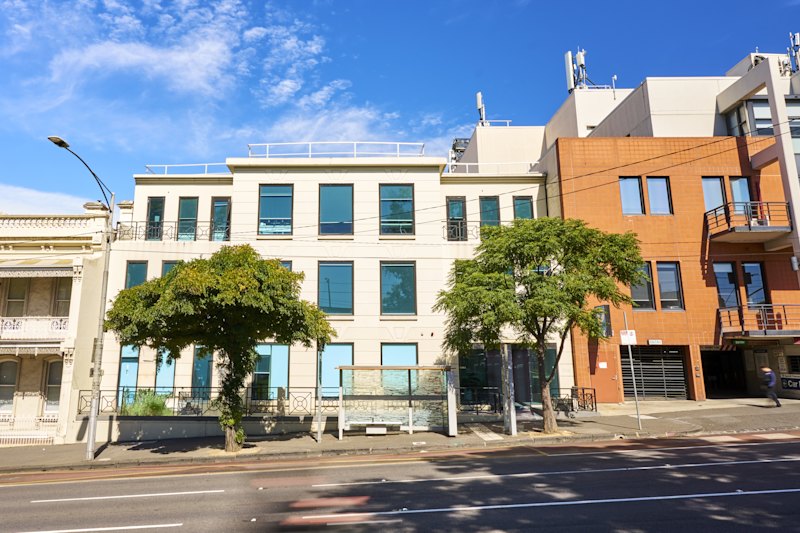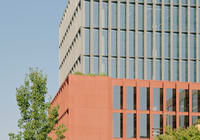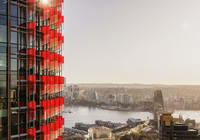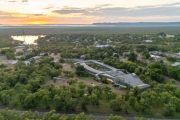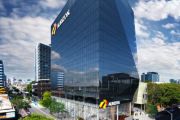
Construction of Parramatta light rail could drive landlords to discount rents in order to keep tenants
Retail landlords along the Church Street section of the Parramatta light rail line could be forced to cut rents to keep their properties occupied when construction begins.
While early works begun in October at the future Parramatta light rail depot at Camellia, the state government has promised construction on the suburb’s ‘eat street’ strip, along Church Street, will not begin until at least 2020. Construction is expected to take up to three years.
But having witnessed the light rail project’s dramatic impacts on businesses in the Sydney CBD’s George Street, small retailers and landlords are already scrambling to plan for how to deal with the disruption.
“The concern at the moment is disruption to business; there’s been no compensation allocated to businesses so at the moment, it’s going to mean a compromise in potential rent that owners charge to secure or keep their tenant during that period,” Ray White Commercial NSW’s western Sydney associate director Joseph Assaf told Commercial Real Estate.
The disruption from the works will not only affect new tenants discussing future leases, but also existing tenants negotiating the terms of their agreement extensions.
“A lot of these tenants will come forward and ask for compensation or consideration or rent reduction to accommodate (their business) because obviously their business is going to be affected…say 40 per cent,” Mr Assaf said.
“Otherwise the owner could potentially have a vacant period, a vacant property with no income coming in.”
The ‘eat street’ restaurateurs are expected to be the most affected businesses, particularly because of the planned removal of outdoor seating during the light rail construction.
“They’re definitely concerned; I think the advantage George Street (Sydney CBD) has over Parramatta is a lot of the city (tenants) are larger organisations, whereas there’s a lot of mum-and-dad small businesses on Church Street and they’re really going to be affected by that,” Mr Assaf said.
But the uncertainty has so far not curbed rental growth, with gross face rents edging up 3.54 per cent in the past 12 months along the Church Street corridor, Ray White Commercial data shows.
The agency’s head of research Vanessa Rader added that rental growth will be “stable” in the short term as the disruption to the CBD will cause some concern for new tenants.
And the volume of retail property sales in the suburb has plummeted from $90 million in 2017 to $16.58 million between January and September 2018.
That figure is dominated by the March sale of the heritage Westpac Bank building at 264-270 Church Street for $14 million on a 4.4 per cent yield.
Owners foresee flurry of development interest
Mr Assaf attributed the significant dip in sales to the “very, very tightly held” retail property market in Parramatta, thanks to a perception that a development rush will come to the suburb.
“A lot of owners feel like their property could be a future development site, because it’s in such close proximity to the development. As a result, owners want to keep their options open in the event a developer knocks on their door; a lot of these properties have already been rezoned,” he said, noting that the first trams are set to run in only five years’ time.
“There’s no urgency for them to sell now, because everyone has this forecasted value of what the final price could be once the development Parramatta Square and the light rail are completed.”
While many of the properties cannot be developed individually, because a larger lot size would be required to build something viable, developers are still forking out a premium for the “development potential” down the track, Mr Assaf said, adding that amalgamations of small sites had yet to happen.
Yields have tightened from above 5 per cent in 2015, when the Parramatta light rail scheme was announced, to 3.6 per cent in September 2018, Ray White Commercial figures show.
Meanwhile, capital values are averaging at $7516 a square metre for retail property in Parramatta.
Development potential has also influenced negotiations with tenants, with many landlords incorporating demolition clauses – which allows them to cancel the lease if they decide to demolish the building – into their agreements.
“That’s the reason why, in my professional opinion, the quality of tenants in Parramatta hasn’t been the best, because no large franchise organisation will want to commit $1 million or $2 million for a fitout only for a guaranteed five or seven-year lease, with a question mark for any (longer) period they’re after,” Mr Assaf.
While these larger organisations typically want a 10-year lease with five-year options, owners may agree to this but only with demolition clauses within the terms “because they ultimately want the highest and best use for their property and that will be on a development basis”, he said.
“The future growth of Parramatta hasn’t occurred yet; while there’s a lot of activity, I think it hasn’t happened, the best is still yet to come.”
Works for the light rail’s first stage, which will connect Westmead to Carlingford via the Parramatta CBD and Camellia, begins in 2019.




